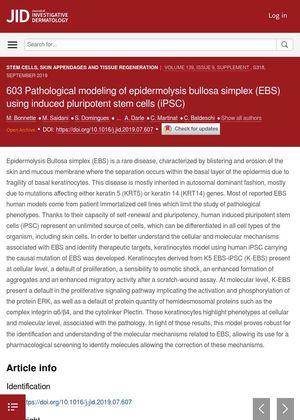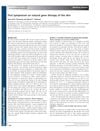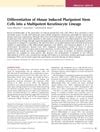Pathological Modeling of Epidermolysis Bullosa Simplex Using Induced Pluripotent Stem Cells
September 2019
in “
Journal of Investigative Dermatology
”

TLDR Scientists used stem cells to create a model of the skin disease Epidermolysis Bullosa simplex, which helped them understand its molecular mechanisms and could aid in finding treatments.
In 2019, a study was conducted to better understand Epidermolysis Bullosa simplex (EBS), a rare disease causing blistering and erosion of the skin and mucous membrane due to the fragility of basal keratinocytes. The disease is mostly inherited and often due to mutations in the keratin 5 (KRT5) or keratin 14 (KRT14) genes. The researchers developed a keratinocytes model using human induced pluripotent stem cells (iPSC) carrying the causal mutation of EBS. The derived keratinocytes from K5 EBS-iPSC (K-EBS) showed a default of proliferation, sensitivity to osmotic shock, enhanced formation of aggregates, and increased migratory activity after a scratch-wound assay. At the molecular level, K-EBS showed a default in the proliferative signaling pathway involving the activation and phosphorylation of the protein ERK, and a default of protein quantity of hemidesmosomal proteins such as the complex integrin α6/β4, and the cytolinker Plectin. This model proved robust for identifying and understanding the molecular mechanisms related to EBS, and could be used for pharmacological screening to identify molecules that could correct these mechanisms.



